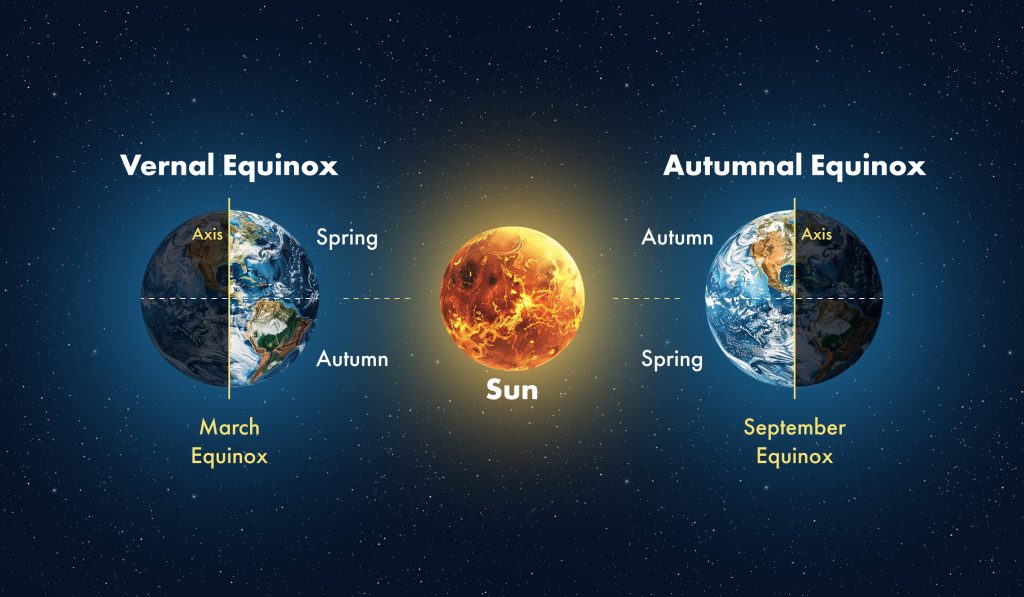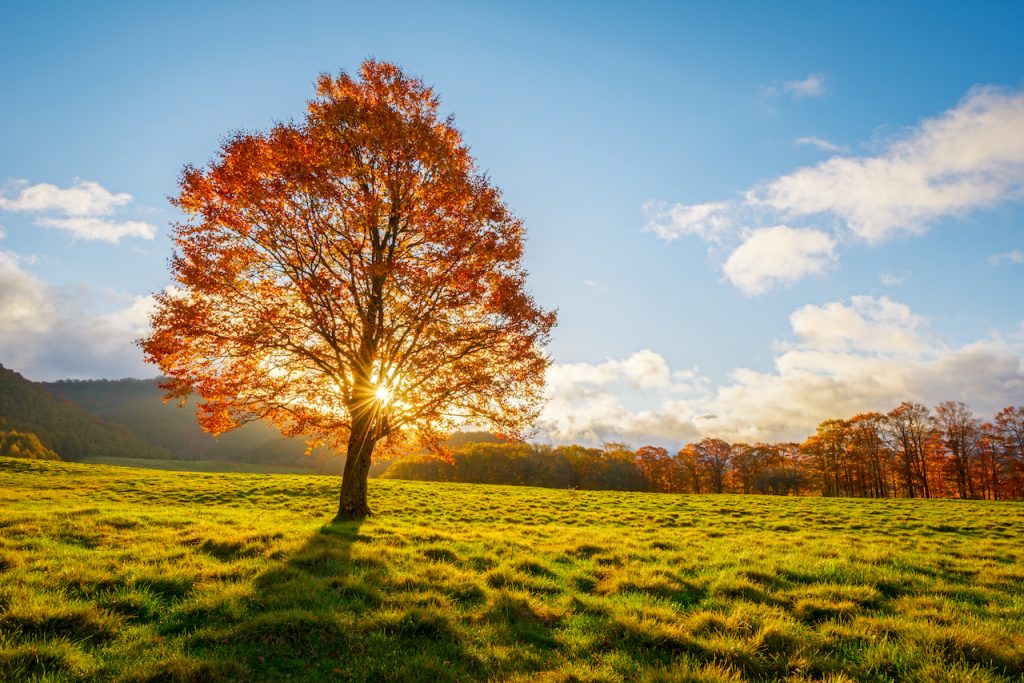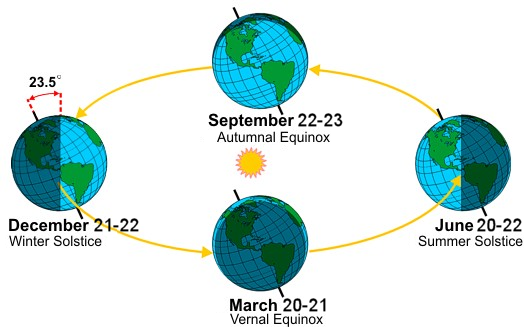The March Equinox 2024: All Questions You May Have So Far!
16th Feb 2024
The March Equinox, also known as the Vernal Equinox, every year marks the transition to spring in the Northern Hemisphere and autumn in the Southern Hemisphere. This celestial event typically happens around March 19th, 20th, or 21st. And the upcoming 2024 equinox is anticipated on March 20th.
Curious about why this celestial occurrence takes place at this specific time? Why the date is not the same every year? We have gathered the most common questions about March Equinox to reveal all the secrets behind this phenomenon!
When exactly is March equinox?
The exact date can vary slightly from year to year due to the complexities of Earth’s orbit and the adjustments made by the calendar to keep pace with astronomical events.
What happens during the March equinox?
The March equinox is the moment when Sun crosses the celestial equator, an imaginary line in the sky above Earth’s equator, from south to north. During this, day and night durations are nearly equal worldwide.

Why is it called equinox?
The term “equinox” is derived from Latin and combines two words: “aequus,” meaning equal, and “nox,” meaning night. The concept of equal day and night, expressed through the term equinox, reflects the astronomical balance between daylight and darkness during these specific points in Earth’s orbit around the sun.
An alternative name for vernal equinox is First Point of Aries. Historically, the vernal equinox was considered the starting point of the zodiac, and it was referred to as the First Point of Aries when the zodiac signs were first defined.
What is the opposite of March equinox?
The opposite of the March Equinox is the September Equinox, also known as the Autumnal Equinox in the Northern Hemisphere.
The September Equinox occurs between September 21st and 23rd and signals the start of autumn in the Northern Hemisphere and spring in the Southern Hemisphere.
During the September Equinox, like its March counterpart, day and night durations are approximately equal globally as the Sun’s rays align directly over the Earth’s equator.

What is the summer equinox called?
Actually, there is no specific term for a “summer equinox”. The term “summer solstice” is more commonly used to describe the point in the year when the Northern Hemisphere experiences the longest day and the shortest night, typically occurring around 21st June. Conversely, in the Southern Hemisphere, June 21st marks the winter solstice, with the longest night and shortest day.
What is the difference between solstice and equinox?
Solstices and equinoxes are celestial events that mark key points in the Earth’s orbit around the Sun, and they are related to the tilt of the Earth’s axis. However, they are not the same.
Solstices are associated with the longest and shortest days of the year, while equinoxes are associated with nearly equal day and night durations. During solstices, the Sun’s path across the sky appears to reach its highest point during the Summer Solstice and its lowest point during the Winter Solstice. During equinoxes, the Sun follows a straight path across the sky, rising due east and setting due west.

Is the March equinox the same everywhere?
During an equinox, day and night durations are approximately equal everywhere on Earth. This occurs because the axis of the Earth is neither tilted toward nor away from the Sun during this specific point in its orbit. As a result, the Sun is directly above the equator, and its rays are evenly distributed over the Earth’s surface.
However, while the duration of day and night is roughly the same globally during an equinox, the specific times of sunrise and sunset can still vary based on geographical location. Near the poles, there may be a more gradual transition between day and night during the equinoxes, while closer to the equator, the transition is relatively swift.
How many days does the March equinox last?
Throughout the March equinox, day and night durations are approximately equal, lasting about 12 hours each, universally across the globe.
How do you calculate the equinox?
To determine the equinox, watch the sunlight through a south-facing window for two hours each day, starting around an hour before noon. Use a yardstick or meter stick to check how straight or curved the sunlight’s path is. The day when the path looks closest to a straight line is the day of the equinox.
What is the connection of the March equinox with astronomy?
From an astronomical viewpoint, the equinox signifies a specific alignment of celestial bodies. During this event, the Earth is situated in a manner where the center of the Sun lies in the same plane as the Earth’s equator. This particular alignment is an outcome of the Earth’s axial tilt and its continuous orbit around the Sun.
Where and how is March equinox celebrated?
The March Equinox is significant in various cultures and traditions worldwide. Many societies celebrate this event as a time of balance, renewal, and the awakening of nature. Festivals, rituals, and traditions often mark the equinox in different parts of the world.
The March equinox, especially its association with the celebration of Nowruz, is primarily observed and celebrated in various countries in the Middle East and Central Asia, including Iran, Turkey, and Kyrgyzstan. The term Nowruz means “new day,” and marks the first day of spring and the new year, as well as a time of hope and renewal. The celebrations often involve symbolic elements representing the arrival of spring.

What is the symbol of the March equinox?
The egg serves as a prominent symbol for the spring equinox, representing new and burgeoning life. Across various cultures and for centuries, eggs have been dyed or painted, and sometimes concealed for others to discover, making them a powerful emblem during the spring festival.
What is the connection between Equinoxes and Stonehenge?
Ancient structures like Stonehenge and other celestial observatories were often designed to align with the sun’s position during the equinoxes. They served as an astronomical calendar for ancient societies. It helped them track the changing seasons, anticipate key agricultural events, and plan religious or ceremonial activities.
What is the effect of the March equinox on nature?
March equinox is a pivotal moment in the cyclical patterns of nature. The equinox makes a great impact on all natural events, such as the blooming of certain flowers, the migration patterns of birds, and the behavior of wildlife.
As the equinox approaches, it’s a global sign for plants, signaling their comeback with a burst of growth and blossoms. Meanwhile, bird species worldwide are gearing up for an epic migration journey, triggered by the equinox’s equal distribution of daylight. It’s a survival strategy, guiding them to optimal breeding and feeding grounds as the seasons shift. In the wild, animals are also adjusting their routines during this celestial event, fine-tuning behaviors like eating and mating in sync with the balanced day and night lengths.
How does the March equinox affect people?
Usually, the March equinox has subtle effects on people. However, some individuals may experience changes in mood and energy levels during the equinox. The changing amount of daylight can influence circadian rhythms, potentially impacting sleep patterns. Some of us may find that they have more energy and wakefulness as daylight extends.
Good news for those affected by Seasonal Affective Disorder – the transition from winter to spring during the March Equinox can bring relief from the symptoms associated with the darker winter months.
Also, the equinox, signaling the changing of seasons, can foster a deeper connection to nature. Many people feel a sense of awe and appreciation for the natural world as it undergoes spring transformations.
In this shared journey with nature, let the March equinox be a reminder of the interconnectedness that binds us to the awe-inspiring rhythms of our planet!






Thank you for your comment! It will be visible on the site after moderation.